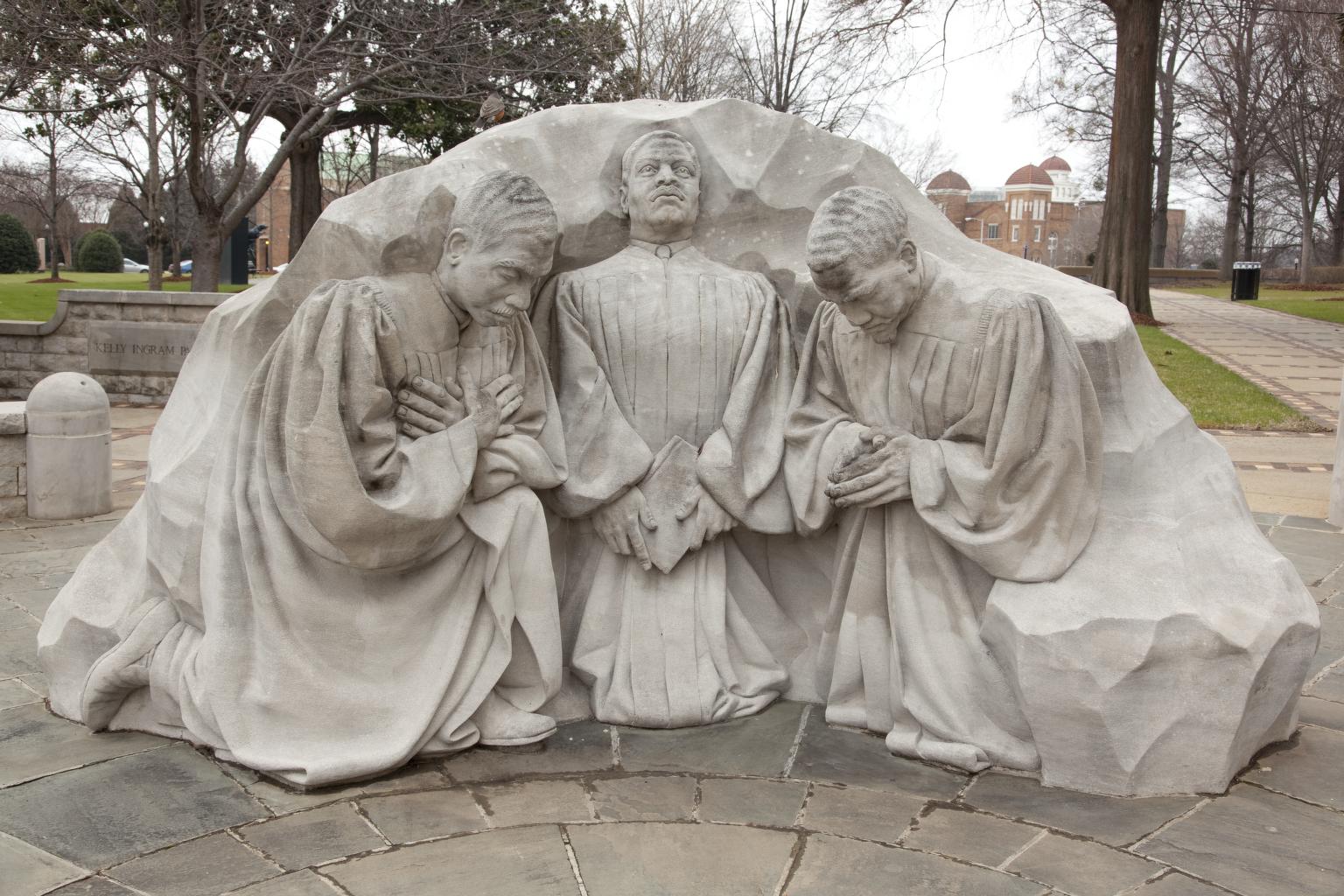By Logan Barrett
Three Ministers Kneeling illustrates both the progress and limitations in public memorialization of Alabama’s Black freedom struggle. Installed in Birmingham’s Kelly Ingram Park by sculptor Raymond Kaskey in 1992, the limestone monument portrays the city’s civil rights movement as a complete victory settled in the past. This narrative of reconciliation celebrates the progress gained during the city’s civil rights campaign of 1963 at the expense of acknowledging a prolonged and broad struggle for Black justice.
Monuments remain a difficult medium for representing diverse social movements. Though modeled on a photograph of N.H. Smith Jr., A.D. King, and John T. Porter, Three Kneeling Ministers originally did not specify its memorialization to these three men. The monument attempted instead to encompass the contributions of many religious leaders in the movement. A 2009 update introduced an interpretative plaque acknowledging these three specific ministers. Like many other civil rights monuments, the sculpture now foregrounds movement leadership and obscures the grassroots composition of the struggle.

Depicting these three men as representative of the movement leadership ignores contributions from women, working-class participants, as well as those of other religious backgrounds. While based on a photograph of an actual moment, an emphasis on kneeling Black men before unseen white antagonists mischaracterize the non-violent movement as troubling submissiveness rather than revolutionary activism. Three Kneeling Ministers ultimately contributes toward a collective memory that sacrifices an enriched understanding of the civil rights movement in favor of a narrow perspective. Monuments of the state’s many important Black lives should not close the book but serve as a prologue. Alabama’s civil rights memorialization should not merely present a static story of the past but rather provide an impassioned call for a better future.



